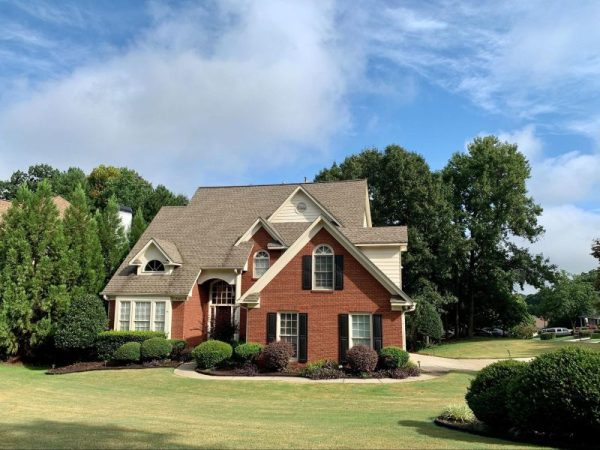Roofing is a critical aspect of a building’s structural integrity and weather protection. Proper roofing installation is not only a matter of aesthetics but also a concern for safety and longevity. To ensure the quality of roofing work, and to adhere to safety and environmental standards, roofing permits and regulations play a crucial role. In this article, we will delve into the importance of roofing permits, the regulations governing roofing installations, and the steps involved in obtaining the necessary permits.
The Importance of Roofing Permits
Roofing permits are official authorizations that grant permission for roofing work to be performed on a building or structure. They are crucial for several reasons:
1. Safety and Compliance
The primary purpose of roofing permits is to ensure that the work is done safely and in compliance with local building codes and regulations. Roofing is a complex process that involves various structural and safety considerations, and improper installation can lead to structural issues, water leaks, and safety hazards.
2. Consumer Protection
Roofing permits protect consumers by holding contractors accountable for the quality of their work. A permit indicates that the contractor has met certain standards and is responsible for ensuring that the installation complies with local regulations. This offers peace of mind to property owners and reduces the risk of subpar work.
3. Environmental Considerations
Roofing projects often involve the removal and disposal of roofing materials, which can impact the environment. Permits may include regulations regarding the proper disposal of roofing waste, including recycling or safe disposal of materials, to minimize environmental impact.
4. Insurance and Warranty Claims
Insurance companies and warranty providers may require proof of permits and inspections to process claims related to roofing issues. Without the proper permits, claims may be denied, leaving property owners with the financial burden of repairs or replacements.
Regulations Governing Roofing Installations
Local regulations and building codes govern roofing installations, and these regulations can vary significantly from one area to another. Some common regulations and considerations for roofing installations include:
1. Roofing Material Standards
Local codes often specify the types of roofing materials that can be used. For example, in areas prone to wildfires, there may be requirements for fire-resistant roofing materials. In hurricane-prone regions, impact-resistant roofing materials may be mandated.
2. Structural Load Capacity
The roofing structure must be able to withstand the weight of the roofing materials, as well as any potential loads, such as snow accumulation or the weight of maintenance workers. Regulations set load capacity standards to ensure the roof’s structural integrity.
3. Wind Resistance
Areas susceptible to strong winds, such as coastal regions, have regulations that dictate wind resistance requirements for roofing materials and installation methods. Proper anchoring and sealing are essential to prevent wind damage.
4. Ventilation and Insulation
Proper ventilation and insulation are key for preventing moisture buildup, which can lead to mold growth, rot, and damage to the roofing structure. Regulations may specify ventilation requirements and insulation standards.
5. Flashing and Sealing
Roof flashing and sealing are crucial for preventing water infiltration. Regulations often detail the specific methods and materials required for flashing and sealing to ensure a watertight roof.
6. Energy Efficiency
In some regions, energy efficiency standards apply to roofing materials and installation. Roofing projects may need to meet specific energy efficiency requirements to reduce heating and cooling costs.
7. Permit Application and Documentation
Local authorities typically require detailed permit applications that include project plans, material specifications, and contractor credentials. Documentation of the entire roofing project, including inspections, is essential for compliance.
8. Environmental Concerns
Regulations may include guidelines for the disposal of old roofing materials. Many areas encourage recycling and proper disposal to minimize the environmental impact of roofing projects.
Steps to Obtaining Roofing Permits
Obtaining roofing permits is typically a step-by-step process that involves several key actions:
1. Assessment and Planning
Before applying for a roofing permit, property owners should assess the condition of their roof and plan the roofing project. They may need to decide on materials, roofing contractors, and the scope of work.
2. Contacting Local Authorities
Property owners or roofing contractors should contact local building departments or municipal authorities to determine the specific permit requirements and fees for the area. The contact may include submitting an initial application or inquiry about the project.
3. Completing Permit Applications
Roofing permit applications typically require detailed information about the project, such as plans, material specifications, the contractor’s license, and the estimated cost of the project. Applications may be submitted online or in person at the local building department.
4. Payment of Permit Fees
Permit fees vary depending on the project’s scope, location, and local regulations. Property owners or contractors are responsible for paying these fees, which often cover the cost of inspections and administrative processing.
5. Plan Review and Approval
The local building department will review the permit application, plans, and other documentation. If the plans meet regulatory requirements, the permit will be approved. The review process may take several days to a few weeks, depending on the local jurisdiction.
6. Schedule Inspections
Roofing work often involves multiple inspections at various stages of the project. These inspections may include structural assessments, ventilation checks, and final inspections to ensure compliance with regulations. Inspections are typically scheduled at specific project milestones.
7. Work on the Project
Once the permit is approved, work on the roofing project can begin. Contractors must adhere to the approved plans and follow the specific regulations outlined in the permit.
8. Inspection and Approval
After completing the roofing work, property owners or contractors must schedule and pass all required inspections. These inspections are essential to verify that the work was done correctly and in compliance with local regulations.
9. Final Documentation
Property owners or contractors should retain all documentation related to the roofing project, including the approved permit, inspection records, and any warranties or guarantees from the contractor.
Challenges and Considerations
Obtaining roofing permits and adhering to regulations can pose certain challenges:
1. Complexity
Navigating the permitting process can be complex, particularly for property owners without experience in construction or renovation. It may require a good understanding of local regulations and building codes.
2. Cost
Permit fees can add to the overall cost of a roofing project, and they vary widely depending on the location and project scope.
3. Delays
The permitting process, including reviews and inspections, can introduce delays in the roofing project timeline. So, property owners should plan for these potential delays.
4. Contractor Qualifications
Choosing a qualified roofing contractor is crucial for compliance with regulations. Hiring an unlicensed or inexperienced contractor can lead to subpar work and potential legal issues.
5. Changing Regulations
Local building codes and regulations are subject to change. Property owners and contractors should stay informed about updates to ensure that their roofing projects remain in compliance.
Conclusion
Roofing permits and regulations are integral to the success and safety of roofing installations. These measures ensure that roofing projects meet structural, safety, and environmental standards and that they are carried out by qualified professionals. Property owners and roofing contractors should be well-versed in local regulations, commit to obtaining the necessary permits, and adhere to the prescribed guidelines to guarantee the longevity, safety, and integrity of roofing systems.
By recognizing the significance of roofing permits and compliance with regulations, property owners can make informed decisions, protect their investments, and contribute to the overall well-being of their communities by maintaining safe and environmentally responsible roofing installations.

























